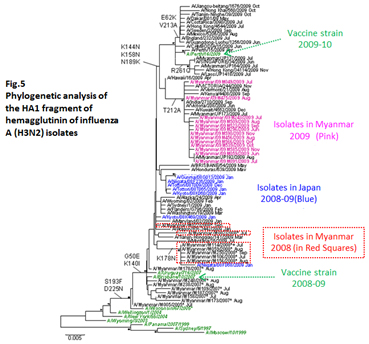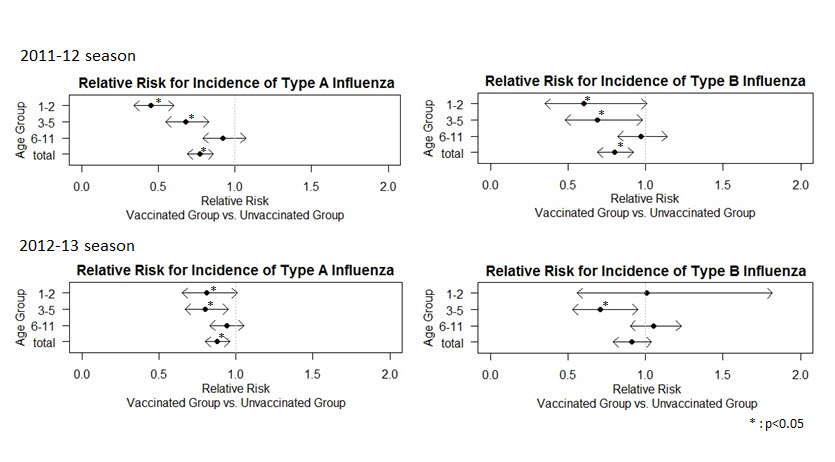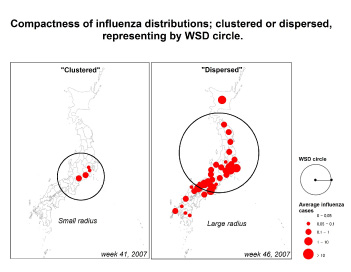International Health
HOME > Activities > Basic Medicine > International Health
1.Research Summary
In the field of International health, we focus on molecular epidemiological
analysis of viruses that cause respiratory infections such as influenza
viruses and respiratory syncytial (RS) viruses and we monitor for the emergence
of drug-resistant viruses. In recent years, we have been conducting spatial
analyses of patterns of virus transmission and accumulation using a geographic
information system (GIS) and endeavoring to apply the GIS method to the
field of social epidemiology.
We provide detailed information about our research outlines and results
on our website.
2.Research Group
- Molecular epidemiology of infectious diseases Group
- GIS Group
3-1.Molecular epidemiology of infectious diseases Group
Research subject
- Molecular epidemiology of influenza viruses in Japan and other countries
- Drug-resistant influenza in Japan and other countries
- Molecular epidemiology of RS virus in Japan and other countries
3-2.GIS Group
Research subject
- Expansion and accumulation patterns of infectious diseases
- Spatial analysis of medical resources and demands (collaborative research)
- Geographic analysis of radioactive contamination in Fukushima prefecture (international collaborative research)
- Geographic study on disease properties from the viewpoint of medical costs
- Factors involved in effects of specific health check-ups
- Effects of social capital on geriatric health
4.Research Results
|
[Area] International health (molecular epidemiology) |
|
|
[Research subject1] Comparison of influenza virus strains isolated in Myanmar from 2007 to 2010 with epidemic strains in Asian countries using genetic analysis |
|
|
[Description] |
[Photographs] 
The A/H3N2 strains which were circulated in 2008-2009 influenza season in Japan, had been isolated in Myanmar in 2008 (6 months earlier than in Japan).In addition, the A/H3N2 Myanmar isolates in 2009 showed different antigenicity as compared to circulated A/H3N2 strains in the last season, and also were similar to A/Perth/6/2009 strain, a vaccine strain for the 2009-2010 season. These results highlight the importance of influenza virus surveillance in Myanmar. |
|
[Area] International Health (Clinical epidemiology) |
|
|
[Research subject2] Estimation of seasonal influenza vaccine effectiveness among children in Japan |
|
|
[Description] |
[Photographs]  |
|
[Area] International Health (Molecular epidemiology) |
|
|
[Research subject3] Spatial analysis of Influenza |
|
|
[Description] |
[Photographs] 
Above Figure: Left panel shows clustered outbreaks in a limited region with small WSD circles and that on the right shows nationwide dispersed outbreaks with large circles. This study demonstrated a relationship between circle sizes and epidemic peak timings. |
Please see the International Health website for a detailed description of our research.
